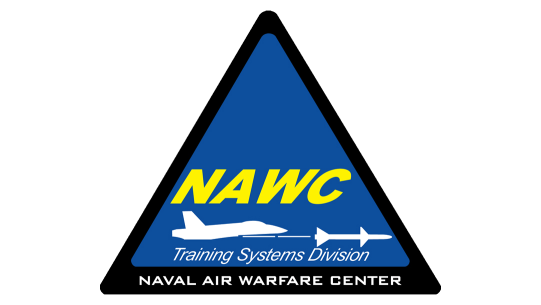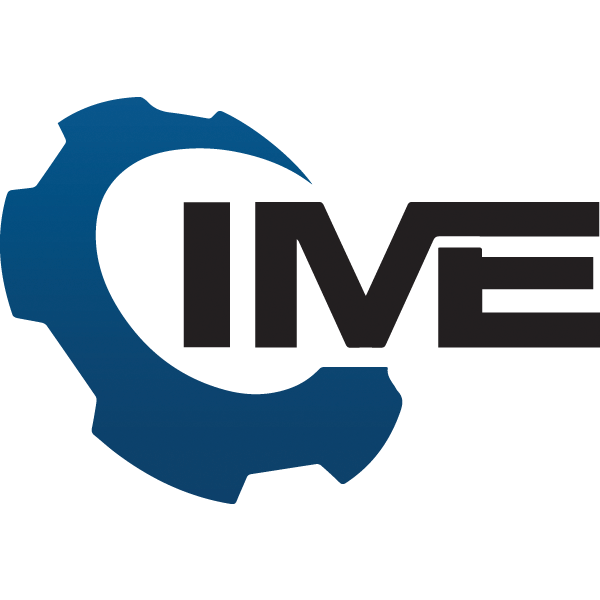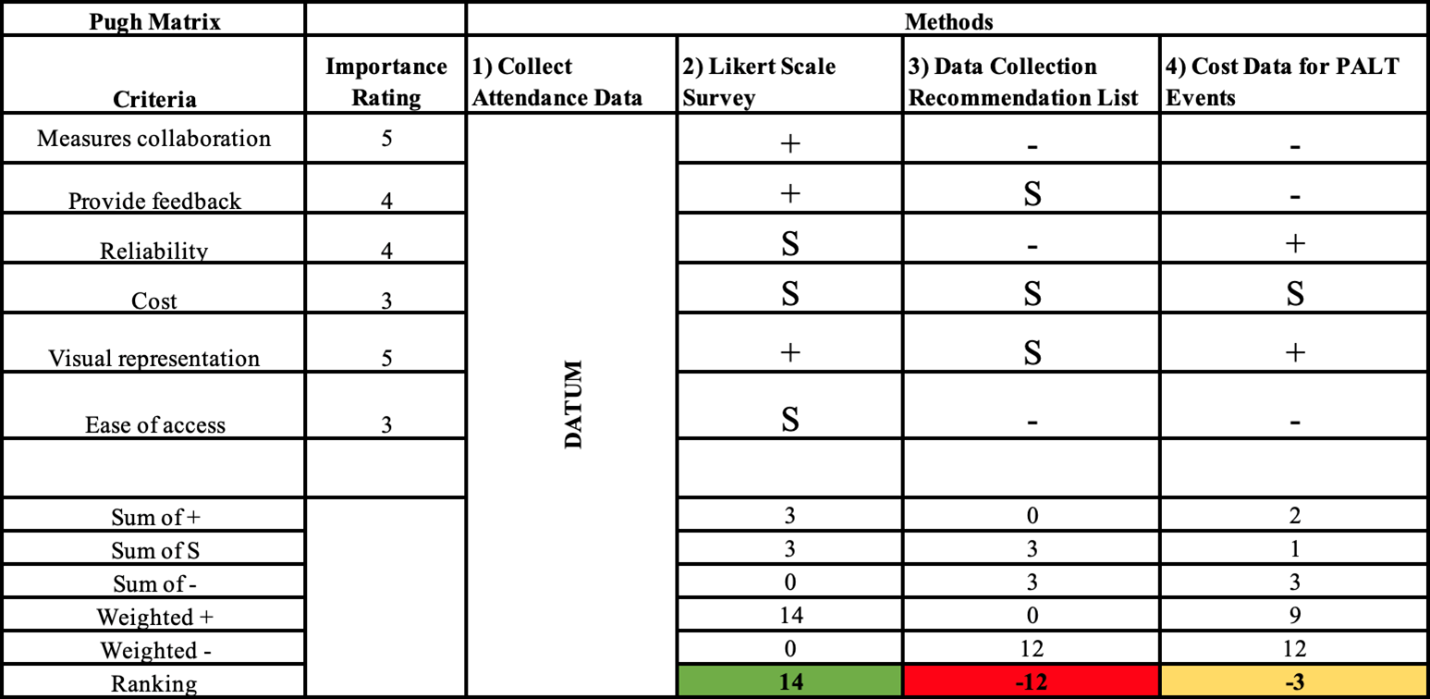





- Established ROI Training Method: An overview on what data military personnel will need to collect for future collaboration events in order to establish a fully defined ROI
- Improve Phase Poster: Improve Phase visual aid on how the ROI data analysis can be
repetitively used for future collaboration methods between government and
industry
- Improve Phase Report: An extensive report on how the project measurables and data analysis can
be further improved upon for new training on ROI methods
- Improve Phase Website: An update to the current project objectives to finalize any technical
requirements before moving to the last Control Phase
Detailed Data Recommendation List



Pugh Decision Table for Continous Improvement

The Pugh decision matrix can be analyzed by taking the three new methods to the problem and comparing them to the current process. As seen in the table above, the Likert scale survey, data collection recommendation list, and the cost data from PALT events are all analyzed through different criteria determined by the team against the collection of attendance data method. The criteria were categorized by how much it measures collaboration, provide feedback, reliability, cost, visual representation, and ease of access. It is noteworthy to mention that the Likert scale achieved the highest ranking due to its ability to measure collaboration, provide feedback, and present visual representation. On the other hand, the cost data method achieved second place for its reliability and visual representation. Lastly, the data collection recommendation list came in last place since the team has determined that this method does not score as highly in measuring collaboration and its reliability. This is since some of the data the team believes would be useful may be more difficult to collect. Although the three methods were ranked, the team suggests that they should each be implemented into yearly use to start collecting return on investment data, that can be compared annually.